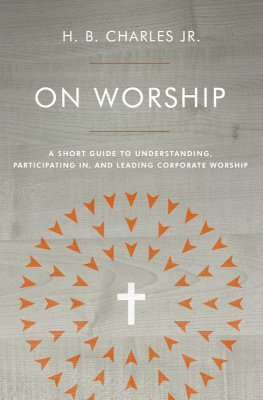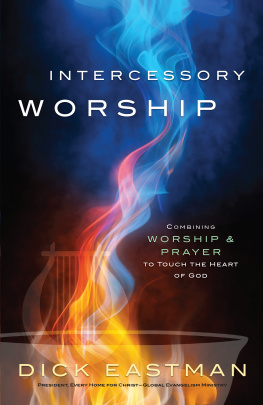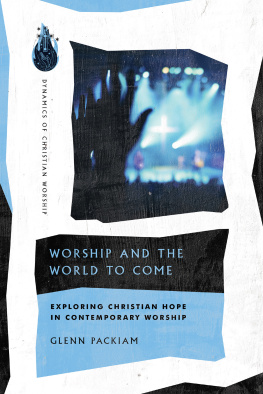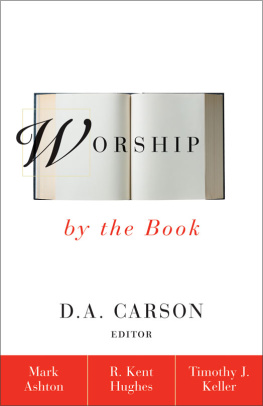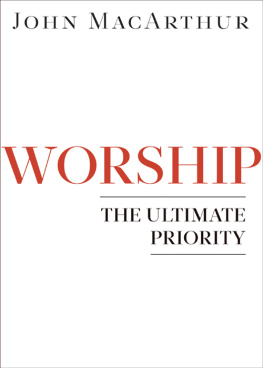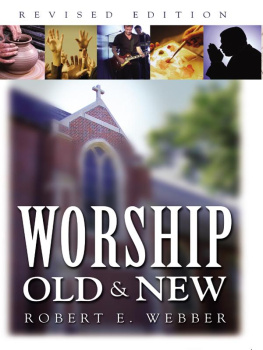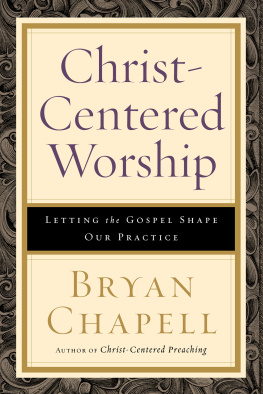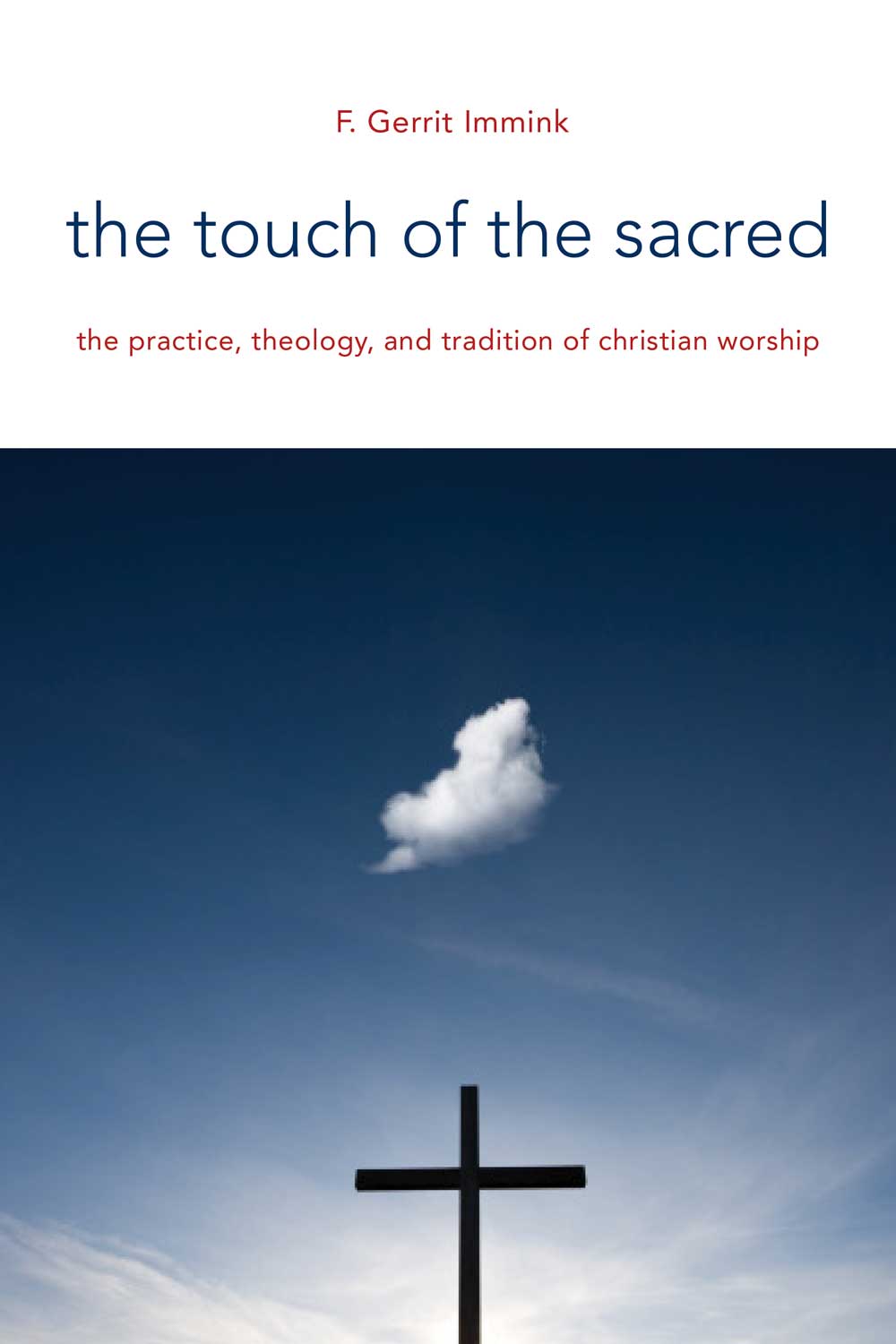2014 F. Gerrit Immink
All rights reserved
First published in Dutch under the title
Het heilige gebeurt. Praktijk, theologie en traditie van de protestante kerkdienst,
by Uitgeverij Boekencentrum, 2011.
This English edition published 2014 by
Wm. B. Eerdmans Publishing Co.
2140 Oak Industrial Drive N.E., Grand Rapids, Michigan 49505 /
P.O. Box 163, Cambridge CB3 9PU U.K.
www.eerdmans.com
Printed in the United States of America
Library of Congress Cataloging-in-Publication Data
Immink, Gerrit.
The touch of the sacred: the practice, theology, and tradition of Christian worship /
F. Gerrit Immink; translated by Reinder Bruinsma.
pages cm. (Calvin Institute of Christian Worship liturgical studies series)
Includes bibliographical references and index.
ISBN 978-0-8028-6915-9 (pbk.: alk. paper)
ISBN 978-1-4674-4047-9 (ePub)
ISBN 978-1-4674-4005-9 (Kindle)
1. Theology, Practical. 2. Worship. 3. Spiritual life Christianity.
4. Salvation Christianity. 5. Jesus Christ Person and offices. I. Title.
BV3.I4613 2014
264 dc23
2014003476
Unless otherwise noted, the Scripture quotations in this publication are from the Revised Standard Version of the Bible, copyrighted 1946, 1952 1971, 1973 by the Division of Christian Education of the National Council of Churches of Christ in the U.S.A., and used by permission.
Contents
The Calvin Institute of Christian Worship Liturgical Studies Series, edited by John D. Witvliet, is designed to promote reflection on the history, theology, and practice of Christian worship and to stimulate worship renewal in Christian congregations. Contributions include writings by pastoral worship leaders from a wide range of communities and scholars from a wide range of disciplines. The ultimate goal of these contributions is to nurture worship practices that are spiritually vital and theologically rooted.
Published
The Pastor as Minor Poet: Texts and Subtexts in the Ministerial Life
M. Craig Barnes
Arts Ministry: Nurturing the Creative Life of Gods People
Michael J. Bauer
Touching the Altar: The Old Testament and Christian Worship
Carol M. Bechtel, Editor
Resonant Witness: Conversations between Music and Theology
Jeremy S. Begbie and Steven R. Guthrie, Editors
God against Religion: Rethinking Christian Theology through Worship
Matthew Myer Boulton
From Memory to Imagination: Reforming the Churchs Music
C. Randall Bradley
By the Vision of Another World: Worship in American History
James D. Bratt, Editor
Inclusive yet Discerning: Navigating Worship Artfully
Frank Burch Brown
What Language Shall I Borrow? The Bible and Christian Worship
Ronald P. Byars
A Primer on Christian Worship: Where Weve Been, Where We Are, Where We Can Go
William A. Dyrness
Christian Worship Worldwide: Expanding Horizons, Deepening Practices
Charles E. Farhadian, Editor
Gather into One: Praying and Singing Globally
C. Michael Hawn
The Touch of the Sacred: The Practice, Theology, and Tradition of Christian Worship
F. Gerrit Immink
The Substance of Things Seen: Art, Faith, and the Christian Community
Robin M. Jensen
Our Worship
Abraham Kuyper, Edited by Harry Boonstra
For the Common Good: Missional Worship for the Sake of the World
Ruth A. Meyers
Wonderful Words of Life: Hymns in American Protestant History and Theology
Richard J. Mouw and Mark A. Noll, Editors
Discerning the Spirits: A Guide to Thinking about Christian Worship Today
Cornelius Plantinga Jr. and Sue A. Rozeboom
Evangelical versus Liturgical? Defying a Dichotomy
Melanie C. Ross
Voicing Gods Psalms
Calvin Seerveld
My Only Comfort: Death, Deliverance, and Discipleship in the Music of Bach
Calvin R. Stapert
A New Song for an Old World: Musical Thought in the Early Church
Calvin R. Stapert
An Architecture of Immanence: Architecture for Worship and Ministry Today
Mark A. Torgerson
A More Profound Alleluia: Theology and Worship in Harmony
Leanne Van Dyk, Editor
Christian Worship in Reformed Churches Past and Present
Lukas Vischer, Editor
We Have Seen His Glory: A Vision of Kingdom Worship
Ben Witherington III
The Biblical Psalms in Christian Worship:
A Brief Introduction and Guide to Resources
John D. Witvliet
Worship with Gladness: Understanding Worship from the Heart
Joyce Ann Zimmerman
The Touch of the Sacred
The Practice, Theology, and Tradition
of Christian Worship
F. Gerrit Immink
Translated by
Reinder Bruinsma
William B. Eerdmans Publishing Company
Grand Rapids, Michigan / Cambridge, U.K.
All over the world, Christian communities meet on Sunday morning for worship. They come together to sing and pray. They read from the Bible and listen to a sermon. They greet each other, give their offerings, and celebrate the Lords Supper. These assemblies show considerable variation, depending on cultural diversity and ecclesial traditions. Some churches follow fixed patterns, based on established scripts, while other churches are characterized by spontaneity, emphasizing freedom of expression. In some denominations, celebrating the Eucharist is an intrinsic part of the main service on Sunday morning, while in others the sermon plays a prominent role. This book deals with the worship service as the concrete practice of the Christian church on Sunday morning. The focus is on the worship service as it developed in the Protestant tradition. What happens during a service? How does it happen? And how do we come to a proper understanding of what happens?
To begin with, we must understand that a worship service is a religious practice. A practice is more than an incidental act: it comprises multiple acts that form a coherent unity. The collective character does not emerge spontaneously, but is coordinated. The worship service follows a script, a liturgical agenda. This script evolved over time and must adapt itself constantly to changing circumstances.
We must also emphasize that the worship service is a religious practice. Broadly speaking, this means that the congregation is practicing its communion with God. In more specifically Christian terminology, we would say that a worship service is about the encounter with the crucified and risen Christ. In this book the theological analysis of the practice of the worship service occupies an important place. Our attention will be directed toward the concrete practice as a human activity. The question, then, is this: How can we arrive at a theological elucidation of the religious dimension of this activity?
The worship service is not the only form that may be used to express the Christian faith. Faith is expressed in a variety of ways in our everyday existence in the moral aspects of our lives, in our contacts with others, and in the social and societal relationships that surround us. There also is a more personal, subjective expression in devotion and spirituality. However, in addition to these forms of expression, the worship service has a significance of its own. In its worship the church becomes visible to the external world. The community of faith assembles in a public space for a public service. Moreover, in worship the personal, social, and societal elements are integrated in a collective public act. In this sense the Sunday worship service provides a comprehensive view of faith.
A great deal of the literature on the practice of the worship service deals with the task of the minister. This is understandable, since preaching and worship are important elements of a pastors task. Schleiermacher, for instance, developed his theory of praxis mainly to promote the professionalism of church leaders. but rather to the communal act. I will pay special attention to worshippers, since their actions are also theory-laden and offer insights into the practice of the worship service. This focus will result in the following questions: How do worshippers participate in the service? What does it mean to sing, pray, and celebrate the Lords Supper together? And what do worshippers do when they listen to a sermon?


